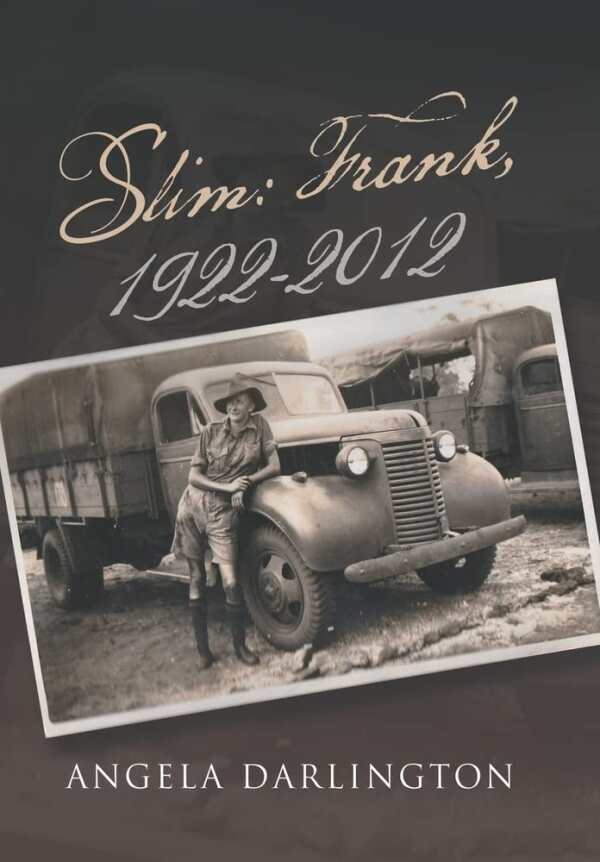Slim: Frank, 1922-2012
Exemplifying family pride, Slim: Frank, 1922–2012 is the biography of an Australian man who memorably protested changing times.
Slim: Frank, 1922–2012 is Angela Darlington’s biography of her grandfather, who resisted personal, political, and cultural changes during his lifetime.
Frank Darlington’s parents emigrated from England to Australia in the early 1900s in pursuit of financial freedom. Despite the worldwide depression during which their son grew up, the family managed without financial assistance. Frank continued to exemplify a frugal lifestyle in his adulthood too. He quit school to work at an early age. At seventeen, he lied about his age to enlist in the military. When it came to work, he preferred to roam: he served in the Middle East and Southeast Asia. He and his first wife had three children and a fraught relationship. Upon his retirement, he returned to Australia and took on odd jobs: he wrote for a newspaper, was a traveling salesman, and worked on wharves.
Throughout, Frank is characterized and described as a nonconformist. This characteristic directs and ultimately overwhelms the text as well: it toggles between time periods, anecdotes, and historical data without a clear sense of direction. Some stories stray from its general chronology; some are repeated.
Frank’s voice dominates, but is often off-putting. He’s seen cursing at children, expressing misogyny, and asserting his belief in compulsory military service. But the book notes that he also supported his children through rough patches, and it celebrates his ability to charm women. Further, it delights in the fact that he refused to align himself with any one political party.
When it comes to Frank’s family members, the text is even more idiosyncratic. They appear without being introduced and are rarely fleshed out on their own merit. Instead, they become a vague part of the book’s loose collection of memories, facts, and photographs. It often seems that others are present most to share their opinions about Frank’s conduct as a father and husband. Thus, his family members share their stories about his jokes, pranks, and unusual habits, like cutting the toes out of his shoes so they’d still fit once he outgrew them. At times, they suggest that he was worn by the traumas of poverty, wartime losses, and divorce; at other times, their implications are darker. The book is more even when it comes to providing historical context, which it does via researched excerpts and pictures. It covers periods of war, union battles, and currency changes with clarity, detailing Frank’s positions on each.
Exemplifying family pride, Slim: Frank, 1922–2012 is the biography of an Australian man who memorably protested changing times.
Reviewed by
Mari Carlson
Disclosure: This article is not an endorsement, but a review. The publisher of this book provided free copies of the book and paid a small fee to have their book reviewed by a professional reviewer. Foreword Reviews and Clarion Reviews make no guarantee that the publisher will receive a positive review. Foreword Magazine, Inc. is disclosing this in accordance with the Federal Trade Commission’s 16 CFR, Part 255.

